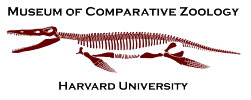Right Humerus (Right Upper Arm Bone) of the Broad-billed Tody Todus subulatus (YPM 109659)
Rotate: left click on mouse
Zoom: right click on mouse (PC) or command and click (Mac)
Move: left and right click simultaneously (PC) or shift and click (Mac)
| Phylogenic Position | |
|---|---|
| Aves - Neognathae - Coraciiformes - Todus subulatus | |
| Species Description | |
|
|
|
| Specimen Information | |
| Species | Todus subulatus (Broad-billed Tody) |
| Element | Right Humerus (Right Upper Arm Bone) |
| Specimen Number | YPM 109659 |
| Sex | Female |
| Location | Dominican Republic |
| Geological Age | Recent |
| Technical Information | |
| Scanner | Konica Minolta Range7 |
| Resolution | 40 µm |
| Number of Data Points | 22672 |
| Number of Data Polygons | 11338 |
| Date Scanned | June 10, 2010 |
| Scan Technician | Ariana Masi |
| Edited By | Maggie Johnson |
| Photographs | |
|
View All 3 Images |
|
| Download Digital Model | Size |
| STL File Not Publicly Available | 1.1 MB |
| Other Todus subulatus (Broad-billed Tody) Elements | |
| Specimen | Element |
| YPM 109659 | Left Humerus (Left Upper Arm Bone) |
| Institution Data Use Policy | |
| http://peabody.yale.edu/collections/collections-policies | |




